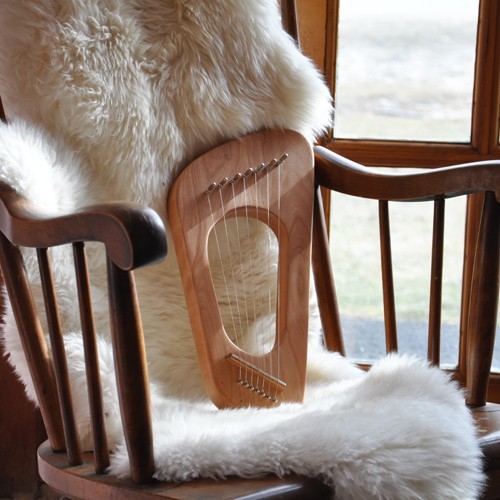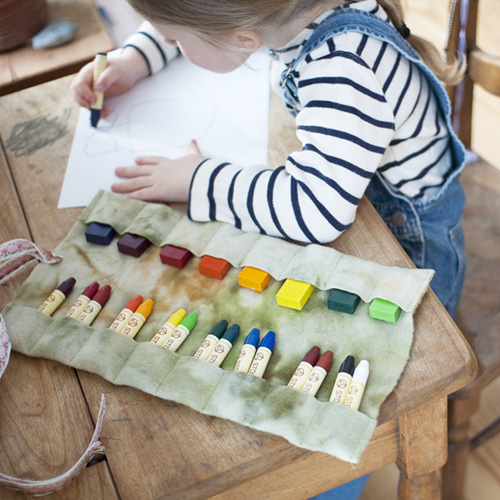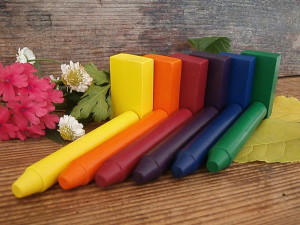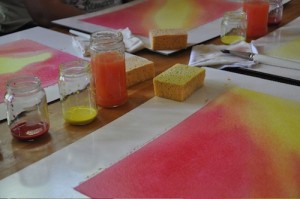Happy Autumn!
Things have been humming at Bella Luna Toys this back-to-school season, leaving me with little time to record new videos for you. But not to worry, more will be coming soon!
Every week I get questions from readers and viewers, so rather than answer each one privately, I’ll share them here because I’m sure many of you have the same questions.
Francesca Asks:
This week I heard from Francesca who wrote:
I recently bought the 7 string song of the sea lyre from you. So now I was wondering if you could recommend me a book to learn to play it! This perhaps sounds silly but would love to learn to use it in order to play it for my daughter and in turn teach her!
I was also wondering if you would recommend beeswax block or stick crayons for a two year old? Some say block some say stick so a little unsure. Also when is it recommended to start watercolour painting?
Sarah Answers:
Dear Francesca,
Always happy to help!
I highly recommend the booklet we sell Familiar Songs for Pentatonic Playalongs. It has some basic guidelines on how to play the pentatonic harp or lyre, and is a collection of familiar folk songs in the pentatonic scale. It will help you pluck the notes to familiar tunes even if you don’t read music.
Unfortunately, there aren’t too many resources on how to play the pentatonic harp, but the good news is that there isn’t much to learn. The hardest part is getting the harp in tune. For help with that, you might want to watch my video on How to Tune Your Pentatonic Harp/Lyre.
Once it’s in tune, you can either strum it, or pluck the strings lightly with the pads of your fingers. You can play familiar songs that are in the pentatonic scale, or just improvise. Because of the nature of the pentatonic scale, anything you play will sound beautiful and in tune!
As for crayons, I would recommend block crayons for a two-year-old because they are virtually unbreakable. 2- and 3-year-olds are likely to put too much pressure on a stick crayon which will break.
By the age of 3½ to 4, I recommend giving a child stick crayons which will help develop the child’s “triangular” or “pencil grasp,” which is important for building their pre-writing skills and actually aids brain development.
With a two-year-old, it is important to use Stockmar crayons with adult supervision because the crayons can cause permanent marks on clothing and unfinished wood. (Crayon marks can usually be easily wiped off of finished wood surfaces with a soft cloth and a little oil.)
There has also been some disagreement among Waldorf teachers on whether stick or block crayons are more appropriate for young children. You can read my view on subject in my blog post “Block Crayons vs. Stick Crayons in Waldorf Education.”
It is possible to give a two-year-old an experience of watercolor painting, but I would start by giving the child just one color to paint with at a time, and to paint along side them so that you can model the technique for them. You especially want to model very light strokes with the brush, because most two-year-olds will press too hard on the brush, scratching their paper with the ferule (the metal part of the brush that holds the bristles).
You could tell an imaginative little story about dipping the fairy’s wings in the paint and show how the fairy lightly brushes the color on the paper with her wings.
For a tutorial on wet-on-wet watercolor painting as practiced in Waldorf education, you can view my two-part video via these two links:
Wet-on-Wet Watercolor Painting Tutorial – Part 1
Wet-on Wet Watercolor Painting Tutorial – Part 2
Hope this is of some help, and that you enjoy many years of making art and music with your child!
Warmly,
I love hearing your questions! Please leave your comments and questions here and I will do my best to answer as many as I can in a future video or blog post.





No Comments